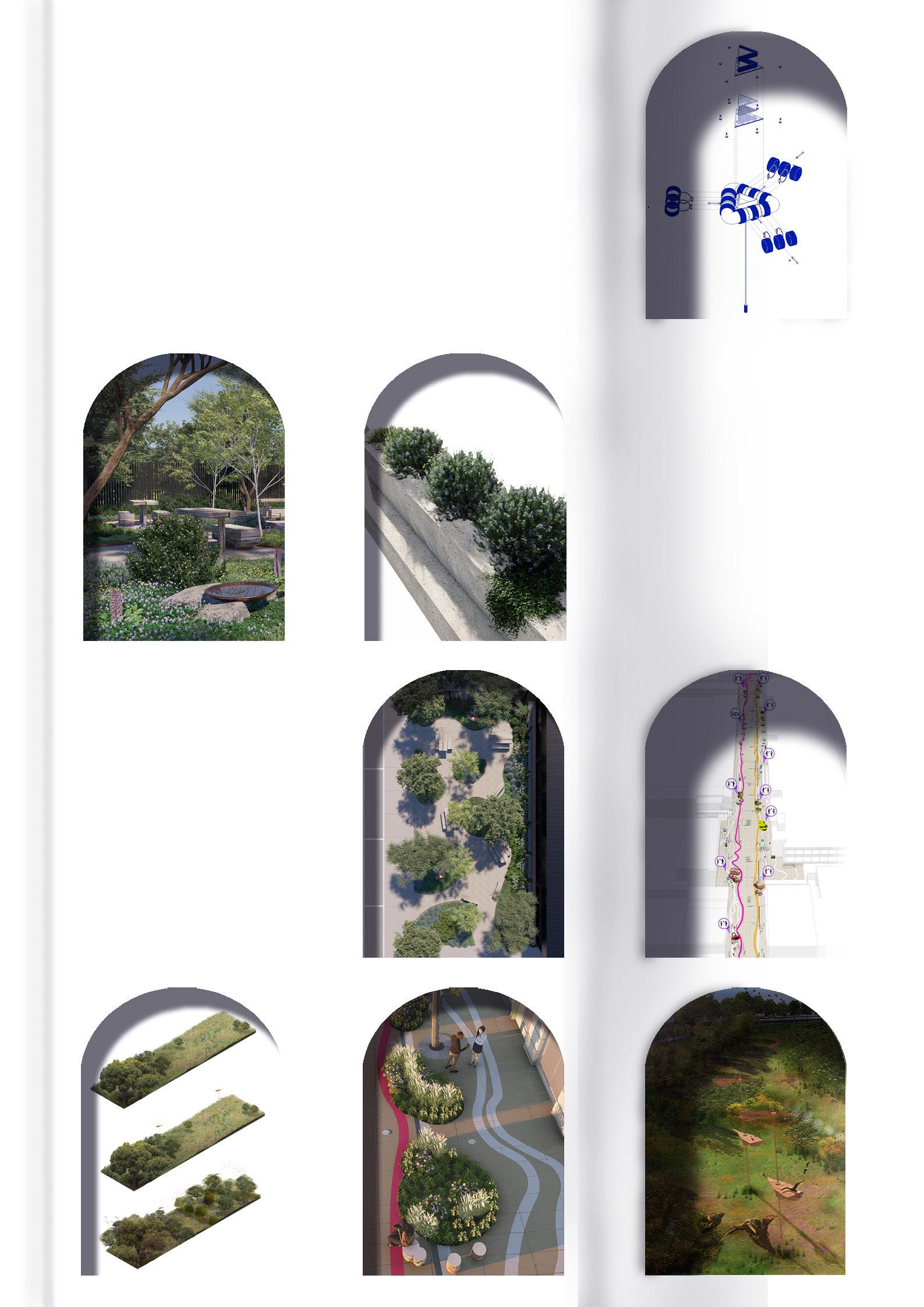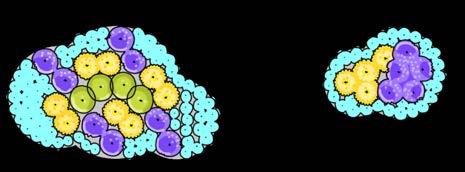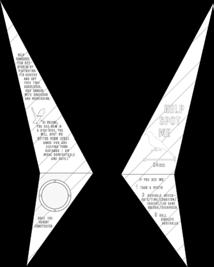
E: sjzaldarriaga@gmail.com
P: issuu.com/sarahjanez

1 WYNDHAM CHRISTWAY COLLEGE




2 CANVAS



E: sjzaldarriaga@gmail.com
P: issuu.com/sarahjanez

1 WYNDHAM CHRISTWAY COLLEGE




2 CANVAS

About
This proposal highlights the urgent requirement for Wyndham Christway College to incorporate eco-conscious elements into its outdoor spaces, emphasising sustainability. A key component of the design is the incorporation of a communal area, strategically aimed at cultivating community engagement.
Additionally, the proposal recommends using Australian native plants for increased greenery and shade, whilst educating the community about the importance of preserving indigenous flora
Construction
Currently under construction.
Client
Wyndham Christway College
Location
Wyndham Vale, VIC
Project Type
Education Landscape Design - Plant design and communal seating area
Project
Detail
Platylobium Landscape Design
Project Lead: Sarah Z
Plant Design: Lucy G & Sarah Z









The proposed project is based on the existing ‘Re-discover Chapel St’ initiative which seeks to regenerate, create, and link open public space and public domain around Chapel Street.
‘Canvas’ responds to the demands of open public spaces for recreational needs amongst hectares of commercial and retail spaces. The project seeks to implement quality streets by providing safe access, ‘green’ networking, beautification, and community involvement. The project is primarily divided into two design strategies: community connectedness and environmental enhancement.
Project Intent
RMIT Bachelor of Landscape Architectural Design (Environments 4)
Client
Location
Elizabeth St, Prahran VIC
RMIT University project - Proposal in conjunction with ‘Re-discover Chapel St’ project












Recognising The Artistic Community Community

RESEMBLES PAINT STROKES. REPRESENTS ARTISTIC INFLUENCES, ENCOURAGES MOVEMENT THROUGH THE SITE, AND A SAFETY MARK FOR VEHICLES. “STROKE”

A SIGN OF REMEMBRANCE, EMBRACES AUSTRALIAN HISTORY. “PAUSE POINT” SEATING AREA “POPPY”

“MURAL” COMMUNITY INVOLVEMENT IN CREATING MURALS FOR SEATS/BOLLARDS. CREATES A SENSE OF BELONGING.


PERMEABLE PAVERS (50MM)
MULCH (70MM)
BIORETENTION SOIL MIX (400MM)
SAND BLANKET (100MM) PEA GRAVEL (50MM) THICK STONE SUBBASE NO.2 (150MM)
SLOPED PERFORATED UNDERDRAIN PIPES
DRAINAGE GEOTEXTILE
SOIL SUBGRADE

Section dwg permeable
Section dwg bioswale
Axo Detail slow sand
Axo Detail drainage geotextile
Slow sand filtration
Tree grate
Bioswale (Group B)

FINE AGGREGATE IN OPENINGS
PERMEABLE PAVERS (50MM)
BEDDING COURSE AGGREGATE (50MM)
DRAINAGE GEOTEXTILE
STONE OPEN-GRADED BASE (100MM)
THICK STONE SUBBASE NO. 2 (150MM)
SLOPED PERFORATED UNDERDRAIN PIPES
SOIL SUBGRADE










Wallaby Grass Pale Flax Lily Pink Bells Chocolate Lily Tufted Bluebell Clustered Everlasting
Bulbine Lily
Austral Stork’s-Bill
Trees Grass Mounds Light coloured permeable pavers


Research question: Can nomadic bird movements be controlled to re-establish fragmented habitats?
‘A Nomads Nest’ is a multi-scalar concept with a micro-intervention. It responds to the need of repopulating the critically endangered bird species, the Regent Honeyeater, resulting in providing a systematic connection for fragmented habitats. Altona Coastal Park, an area once home to the species, acts as the base location among identified habitats that create potential paths to regulate visits and population spread throughout Victoria. Habitat distribution preferred by the Regent Honeyeater are in patches, therefore the design will act as a life supporting landscape whilst these remnant habitats are rebuilt.
Three design strategies are generated to address the needs of the client: Nomads Nest’, ‘Nomads Hide’, and ‘Nomads Revegetated Coastal Woodland’.
Project Intent
RMIT Bachelor of Landscape Architectural Design (Studio 6)

Designing for: Regent Honeyeater Anthochaera phrygia
Altona Coastal Park, VIC Client Location
Parks - Designing for other creatures. Project Type
Project Detail
RMIT University project - Designed in conjunction with LA+ Creature Design International Competition 2020


Lenses of the other creature representation
The artificial birds’ nest mimics the embodiment of a Regent Honeyeater. The construction of the nest takes into account breeding and nesting practices both captured and in the wild. Although an artificial nest has been built, the design encourages nest construction as it provides qualities preferred by the Regent Honeyeater.
Function:
+ Nesting
+ Roosting
+ Predation protection
+ Supporting landscape by mimicking tree habitat
Benefits:
+ Supports species protection
+ Encourage successful and safe breeding ground and reproduction
+ Useful tool to study the species qualities such as detecting trends in rates of predation


Holes provide wind circulation to the inner nest, aids in normalising ideal hatch temperature.

Angled nest edges, coated in epoxy (slippery when wet), to combat predation i.e. gliders.



Mimics dense foliage
CUP SHAPED NEST (EXTERIOR)
Mimics branches that naturally creates “forks”. Aids in structural integrity for rebuilt nests.
CUP SHAPED NEST (INTERIOR)
Initial nest constructed from compacted dried materials, later will naturally degrade/reused by Regent Honeyeater or other bird species.


Designing for empathy representation
The bird hide intends to highlight the importance of protecting the Regent Honeyeater to the community - designing for empathy. Sighting records are invaluable. They help piece together habitat use, seasonal movement, and breeding patterns. Their movement can be unpredictable, as they move interchangeably towards habitats with higher abundance of food, therefore public engagement for monitoring and research is vital. These bird hides are strategically positioned to encourage safe public engagement and access, and provide a monitoring area for volunteers and professionals.
Function: Bird watching + Species monitoring and research + Engraved aluminium contains + information about the Regent Honeyeater, its significance and how to help Bird bath: water source + (E.g. for bathing)
Benefits: Safe public engagement + Minimises habitat disturbance + Minimises threats to the species +



Multiple viewing points for nondisruptive interaction.



ENGRAVING Regent Honeyeater identification. Encourages public involvement.
WATER STATION Source for bird species. Allows human close encounter without being disruptive.




Existing vegetation incl. revegetated Box Mistletoe Amyema Miquelii


Nomads Revegetated Coastal
Proposal Overview | Strategy Three
+ Ensure longevity and revisitation to the site
+ Support population enlargement by increased food source
+ Protect important grassland habitat from erosion caused by climate and
sea level changes from the coast + Connect fragmented habitats and generate larger habitats.
Project ‘A Nomads Nest’ has established: 72 nests, 30 hides. With future expansion of the project into locations such as Jawbone Reserve, Cherry Lake, Point Cook Coastal Park, and Eynesbury Grey-Box Forest, it would be able to establish:
288 nests, 120 hides. That is a potential 1728 Regent Honeyeaters repopulated with an average of 1 successful youngling bred per nest.





Protected Zone (No access)
- Protected buffer zone with no access to pedestrian.
Reduced Pedestrian Circulation
- Grassland and protected zone accessed at a low-zero rate.
Pedestrian Access (Before and After)
- New path follows the border of the coastal park rather than through. For protection and preservation of grassland habitat.
HABITATS
Revegetated Areas
- The revegetation aids in reestablishing fragmented habitats, and increasing food source. Habitat


- 7 identified habitats exist and preserved.
INTERVENTIONS
Nest Location
- Located at close proximity to the border of the coastal park to allow easy viewing. Encourages the use of the footpath, resulting in protecting habitats and the Regent Honeyeater/other bird species.
Hide Location
- Encourages a safe and informative interaction without disruption to local fauna and flora.
About Collection of PROFESSIONAL PROJECTS 3D
Landscape Design Renders



Commercial Design 2024
Construction: Completed
Landscape
Landscape